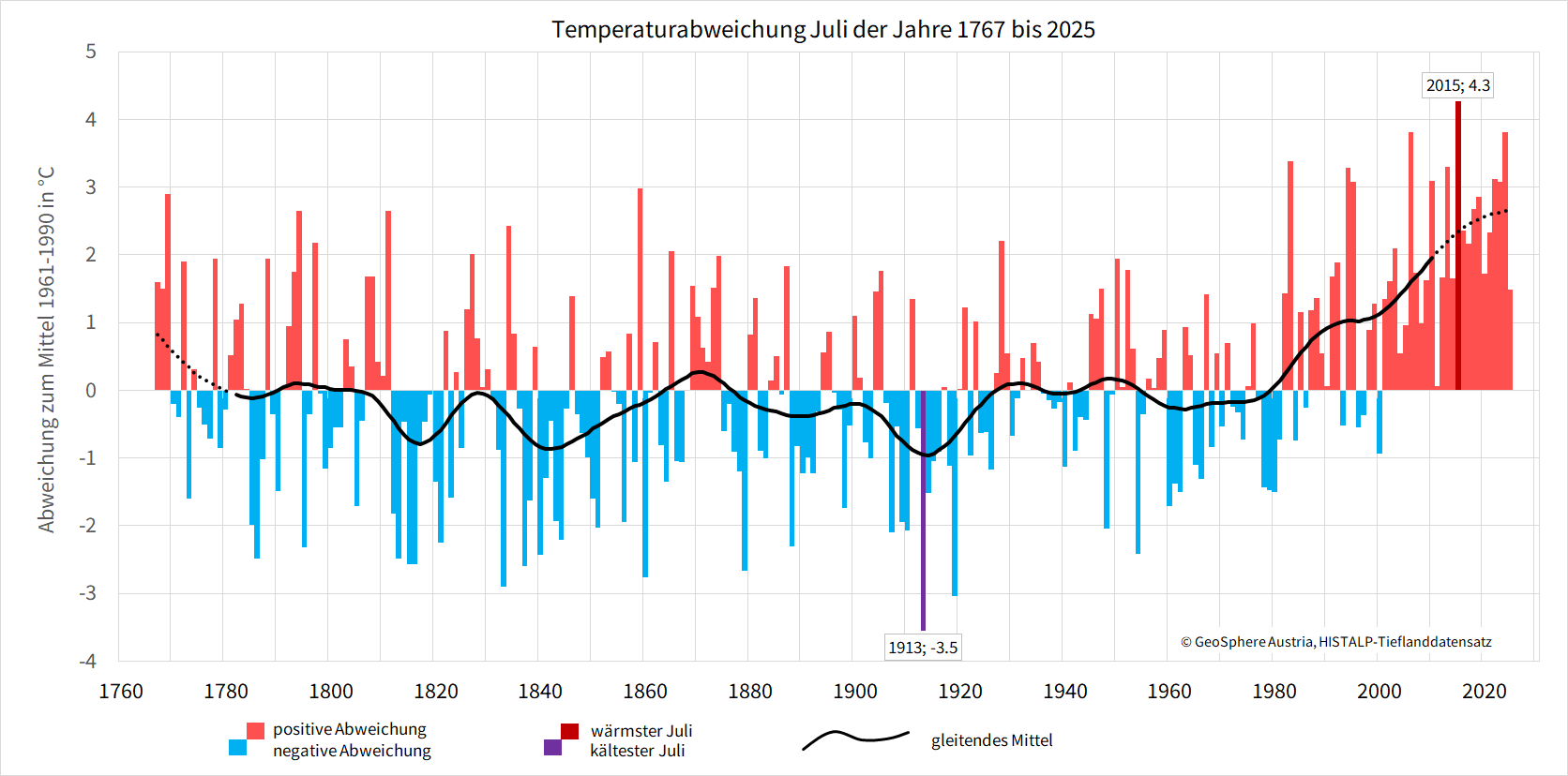July 2025 above-average cloudy and wet
Temperature around the average of the last 30 years and well above the average of previous decades.
Many people felt that July 2025 was not very summery. This is particularly due to the many rainy days and the relatively few hours of sunshine. ‘In the Austria-wide evaluation, July 2025 brought 42 per cent more precipitation than the long-term average. This made it the wettest July since 2012 and one of the five wettest since 1961,’ says climatologist Alexander Orlik from GeoSphere Austria, ‘in addition, there were 27 per cent fewer hours of sunshine in July 2025 in the Austria-wide evaluation than in the long-term average. It was the gloomiest July since 1979 and one of the 15 gloomiest since the sunshine measurement series began in 1925.’
The reason why the weather was too cloudy and too wet for long stretches was the low-pressure systems repeatedly moving across Austria from the west or north-west. In some cases, there were even new rainfall records: in Bregenz, it rained 401 millimetres this July. This is slightly more than the previous July rainfall record of 394 millimetres in 1955 and 120 per cent more than the long-term average.
July 2025 brought phases that were too warm and too cool. Over the month as a whole, July 2025 was roughly in line with the average for the recent past (climate period 1991 to 2020), with a deviation of -0.2 degrees in Austria's lowlands and -0.6 degrees in the mountains. Compared to the climate period 1961 to 1990, July 2025 was even relatively warm and was 1.5 degrees above average in the lowlands and 1.0 degrees above average in the mountains.
Mainly due to the heatwave at the beginning of the month, the number of hot days (at least 30 degrees) this July was around the average of the recent past and well above previous decades.
The number of summer days (at least 25 degrees) was relatively modest, however:
Below 500 metres above sea level, there was an average of 17 summer days in Austria in July 2025. This is 15 per cent less than the long-term average and the lowest July figure since 2014.
At altitudes between 500 and 1000 metres above sea level, there were an average of 11 summer days in July 2025. This is 21 per cent less than the long-term average and the lowest July value since 2011.
With the redcurrant and apricot fruit ripening, we are now in the final stages of high summer in the phenological calendar.
In hot and dry June, nature was still about a week ahead. With the humid and at times relatively cool weather in July, the lead has not continued.
The average fruit ripeness of redcurrants over Austria was around four days ahead of the long-term average for 1991-2020 and 15 days ahead of the average for 1961-1990 with the onset on 13 June 2025. The average fruit ripeness of apricots over Austria was around the average for 1991-2020 and 16 days ahead of the average for 1961-1990 with the onset on 8 July 2025.
Translated with DeepL.com (free version)

